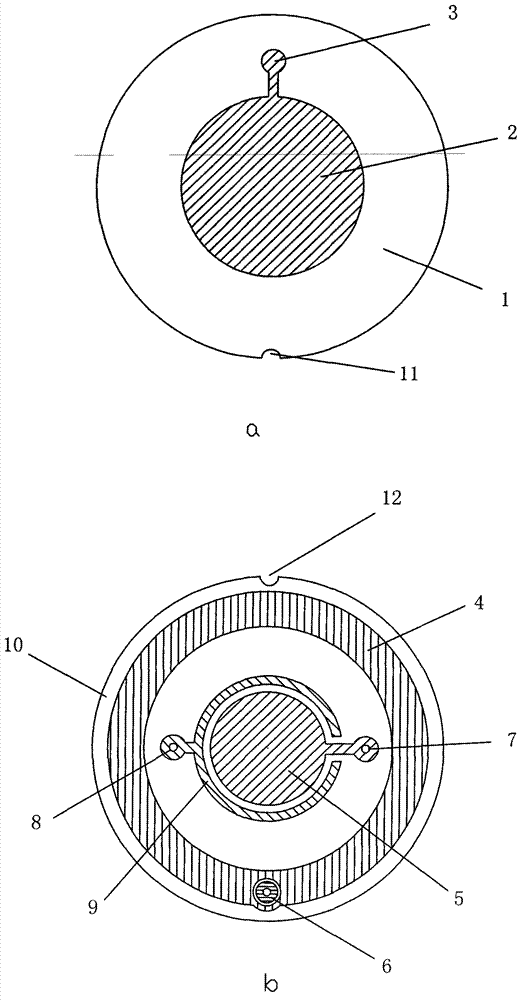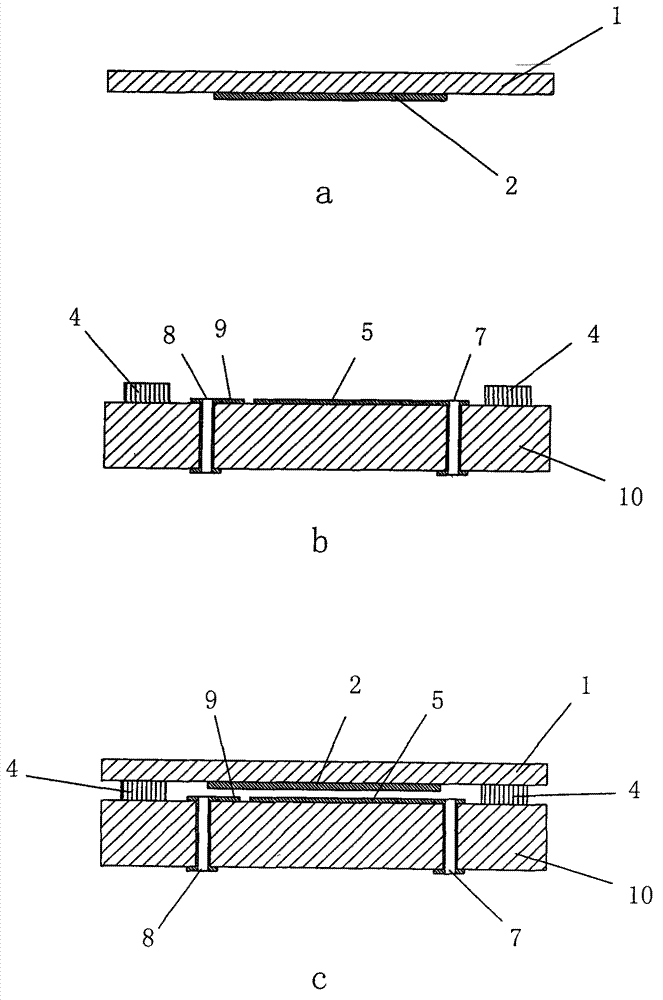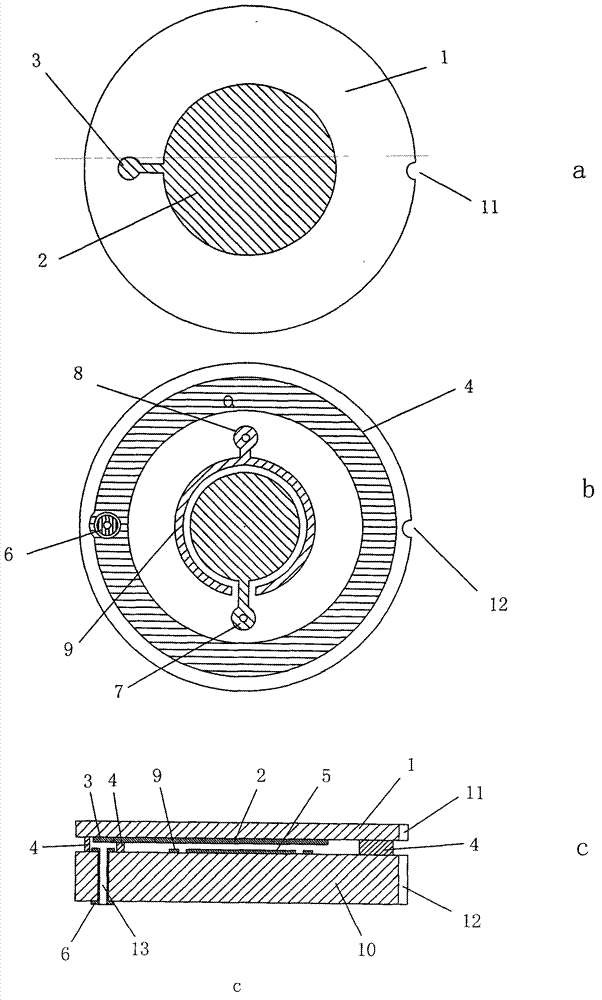Ceramic capacitive pressure sensor
A pressure sensor and ceramic capacitor technology, applied in the field of ceramic capacitive pressure sensors, can solve the problem of difficulty in precise control of the thickness of annular spacer piers
- Summary
- Abstract
- Description
- Claims
- Application Information
AI Technical Summary
Problems solved by technology
Method used
Image
Examples
Embodiment Construction
[0021] as attached figure 1 . Shown: figure 1 In a, (1) is the ceramic cover plate, which is the thinner of the two ceramic substrates, with a thickness of only 0.2-1.2mm. The pressure sensor is subjected to external pressure, mainly because the ceramic cover plate will produce elastic bending in the thickness direction. A layer of metal electrodes with a thickness of 0.2-0.6 μm is made on the surface of the circular ceramic cover plate by screen printing or vacuum sputtering, that is, the cover plate electrode (2), and the lead pad (3) is connected next to the electrode (2). The edge of the ceramic cover plate (1) is provided with a cover plate positioning notch (11).
[0022] figure 1 In b, (10) is a ceramic substrate, which is the thicker one of the two ceramic substrates, with a thickness of 3-6mm. The same method is used on the circular ceramic substrate surface to make a layer of 0.2-0.6 μm thick metal electrode, i.e. the substrate electrode (5), and the ring electrod...
PUM
| Property | Measurement | Unit |
|---|---|---|
| Thickness | aaaaa | aaaaa |
Abstract
Description
Claims
Application Information
 Login to View More
Login to View More - R&D
- Intellectual Property
- Life Sciences
- Materials
- Tech Scout
- Unparalleled Data Quality
- Higher Quality Content
- 60% Fewer Hallucinations
Browse by: Latest US Patents, China's latest patents, Technical Efficacy Thesaurus, Application Domain, Technology Topic, Popular Technical Reports.
© 2025 PatSnap. All rights reserved.Legal|Privacy policy|Modern Slavery Act Transparency Statement|Sitemap|About US| Contact US: help@patsnap.com



